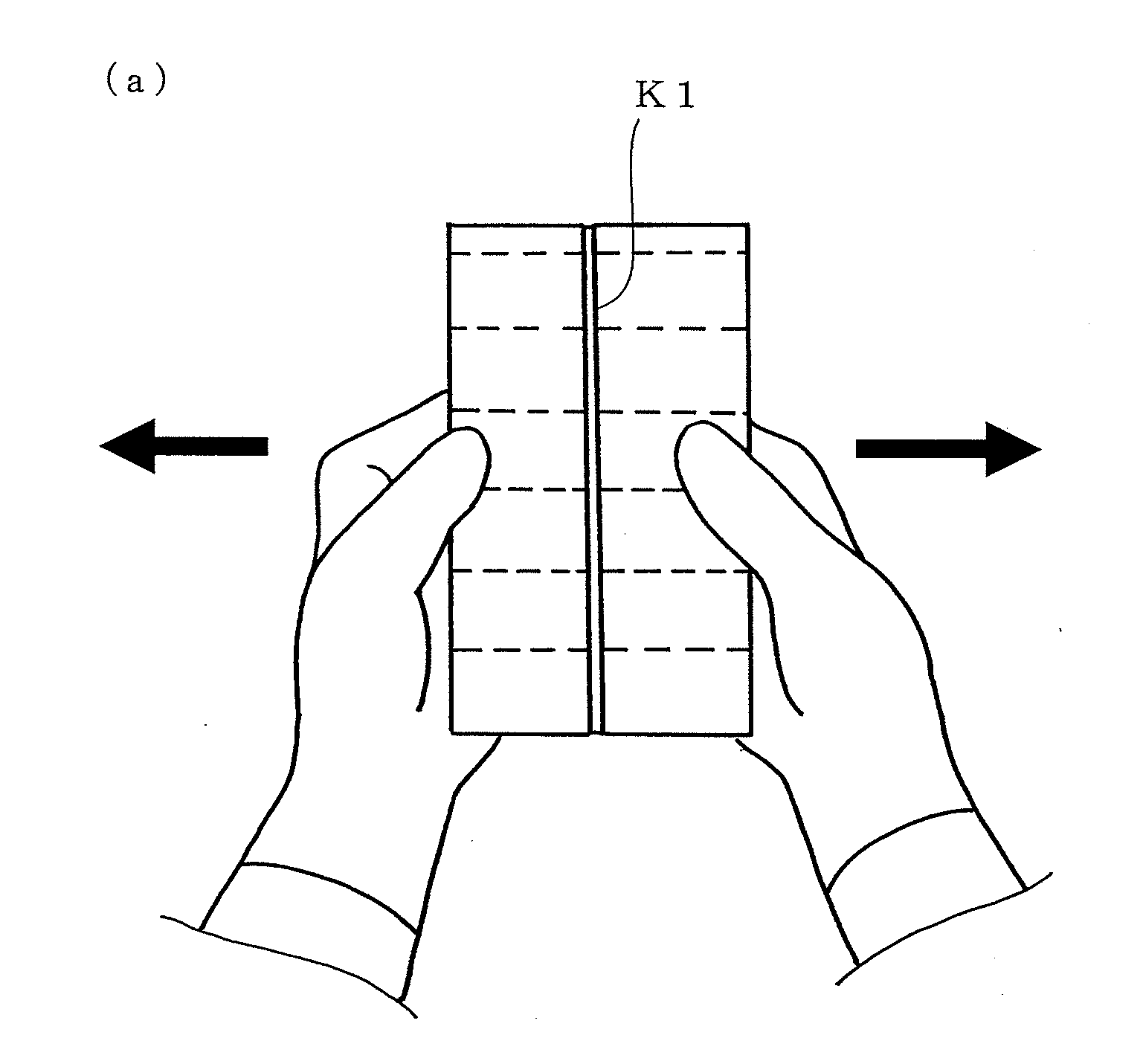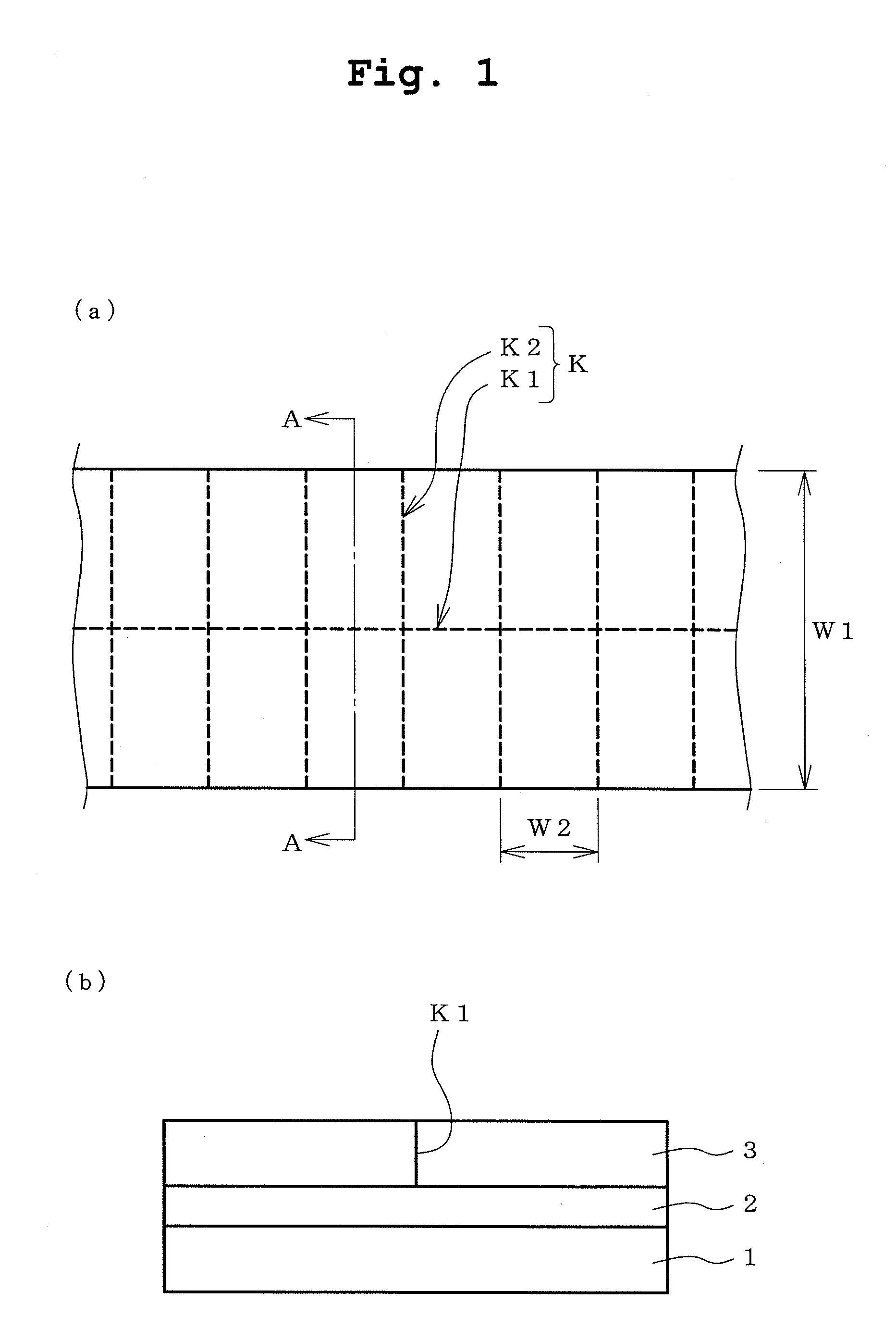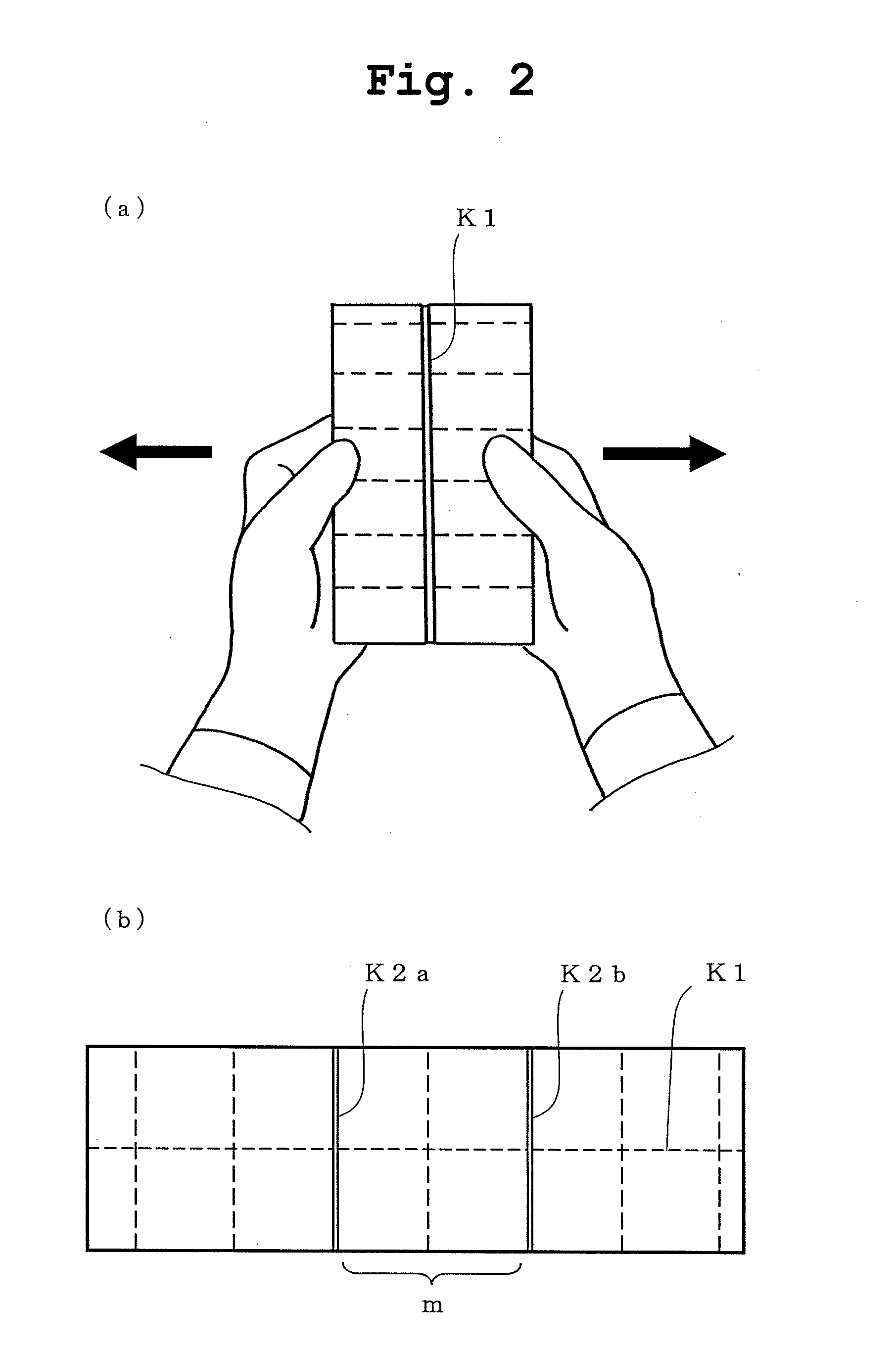Stretch adhesive bandage
a technology of elastic bandage and stretch, which is applied in the field of stretch (elastic) adhesive bandage, can solve the problems of many users, rash or blister on the skin, and many users' handlability complaints
- Summary
- Abstract
- Description
- Claims
- Application Information
AI Technical Summary
Benefits of technology
Problems solved by technology
Method used
Image
Examples
first embodiment
of the Present Invention
[0087]In the first embodiment of the present invention, as shown in FIG. 1(b), the adhesive bandage has a constitution wherein an adhesive layer 2 and a release liner 3 are laminated in this order on one surface of a bandlike fabric base 1. The adhesive bandage when release liner 3 is peeled off is stretchable in the longitudinal direction and the width direction, due to the stretchability imparted to bandlike fabric base 1. In the release liner 3, as shown in FIG. 1(a), perforation line K (perforation line K1 in the longitudinal direction, perforation line K2 in the width direction) is formed in the longitudinal direction and the width direction.
[0088]As described above, since an adhesive bandage is imparted with stretchability in the longitudinal direction and the width direction, and perforation lines are formed in the longitudinal direction and the width direction, an optionally selected perforation line (in FIG. 2(a), perforation line K1 in the longitudi...
second embodiment
of the Present Invention
[0153]The whole constitution and constitution of each part of the second embodiment are explained in detail in the following.
[0154]In the second embodiment of the present invention, the adhesive bandage has a constitution wherein an adhesive layer 2 and a release liner 3 are laminated in this order on one surface of a bandlike fabric base 1, as shown in FIG. 6(b). The adhesive bandage when release liner 3 is peeled off is stretchable only in the longitudinal direction, due to the stretchability imparted to bandlike fabric base 1. In the release liner 3, as shown in FIG. 6(a), perforation line K is formed in the width direction.
[0155]As described above, since an adhesive bandage is imparted with stretchability in the longitudinal direction, and perforation lines are formed in the width direction, an optionally selected perforation line K is broken to be a dividing line by stretching the adhesive bandage in the longitudinal direction.
[0156]In the second embodim...
example 1
First Embodiment of the Present Invention
[0187]In the present Examples, an adhesive bandage was actually produced, and the manner of breaking at perforation lines by utilizing stretchability in both directions was confirmed. In addition, various perforation lines were utilized to peel off a release liner and adhere an adhesive bandage, and action of perforation lines, improvement of handlability, adhesion state and the like were confirmed.
[Kind of Samples Produced]
[0188]The samples of the adhesive bandage produced were the following 3 kinds having different stretchability.
[0189](a) A sample showing a fixed load elongation in the longitudinal direction and a fixed load elongation in the width direction, which are only slightly different so that the difference between both directions is difficult to feel when stretched in the longitudinal direction and the width direction respectively. In this Example, the sample showed a fixed load elongation in the longitudinal direction of 20% and ...
PUM
 Login to View More
Login to View More Abstract
Description
Claims
Application Information
 Login to View More
Login to View More - R&D
- Intellectual Property
- Life Sciences
- Materials
- Tech Scout
- Unparalleled Data Quality
- Higher Quality Content
- 60% Fewer Hallucinations
Browse by: Latest US Patents, China's latest patents, Technical Efficacy Thesaurus, Application Domain, Technology Topic, Popular Technical Reports.
© 2025 PatSnap. All rights reserved.Legal|Privacy policy|Modern Slavery Act Transparency Statement|Sitemap|About US| Contact US: help@patsnap.com



